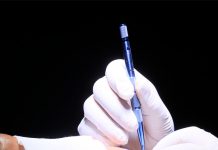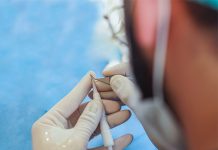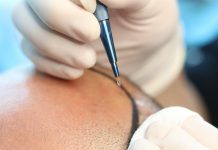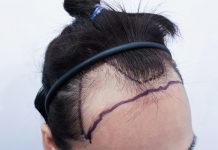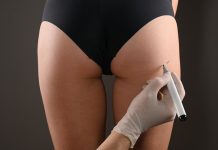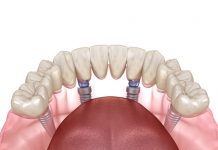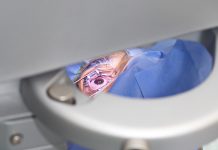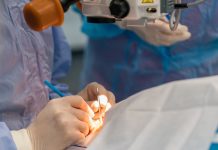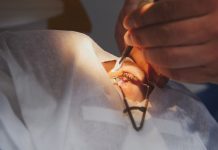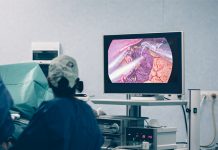DHI Hair Transplant
DHI Hair Transplant in Turkey, its average cost, Direct Hair Transplant procedure and all you need to know about permanent hair growth are explained.
DHI hair transplant, also referred to as Direct Hair Implantation, is one of the most preferred hair transplantation methods. DHI hair transplant results with amazing before and after looks. Besides, DHI hair transplant costs are pretty affordable. There is a price for anyone who thinks of getting a hair transplant. The costs are between £800 – £12,000.
What Is DHI Hair Transplant?
DHI hair transplant technique includes DHI Choi pen, known as DHI implanter which makes the procedure of DHI hair restoration pretty easier for both patients and surgeons. DHI hair transplant method is highly effective and it results in permanent hair restoration with a short recovery time.
If you are looking for a DHI hair clinic, you can consider a DHI hair transplant in Turkey, Istanbul. Losing hair or having thinning hair is pretty common for both men and women by age 50. Balding or thinning of the hair can be caused by many reasons and they can be treated in different ways. However, when the reason behind hair loss is age or hereditary, it is not possible to make hair grow again by using medication or hair products. Therefore, hair transplantation is the only way available to restore balding hair.
There are many types of hair transplantation surgery and Direct hair transplant is one of the safest among them. If you consider getting hair transplantation done, you should consider a DHI hair transplant for a permanent result with natural and healthy hair.
Difference Between DHI and Other Methods
One cannot describe the DHI hair transplant method without referring to FUT and FUE hair transplant techniques due to their similarity in the procedure. In the FUT method, hair follicles are extracted by cutting the harvest area of the scalp, which is the back of the scalp in general, which includes hair follicles then implanting them through small incisions after the hair grafts are cut in small pieces. In the FUE hair transplant method, hair follicles are removed individually and prepared for the implantation step, then implanted through micro incisions. Direct Hair Transplantation is a type of Follicular Hair Transplant; however, in DHI hair transplant, the implantation method of hair grafts is different from the FUE hair transplant.
In DHI hair transplant, the hair grafts removed from the scalp individually are implanted in the target areas that are bald using an implanter tool called DHI Choi pen directly after getting them extracted from the scalp. In other words, in DHI hair transplant, the surgeon does not have to prepare hair follicles or cut incisions on the scalp of the patient owing to the device used in the hair transplantation process.
What Is DHI Choi Pen (DHI implanter)?
DHI Choi pen was created by Korean scientists to make hair transplant surgery less invasive and easier to perform. DHI implanter allows the surgeon to cut the scalp as wide as the hair follicles that creates a smaller incision on the scalp of the patient. After extracting the hair grafts, the DHI implanter collects them in its storage section that has got a special solution that protects hair grafts that were stored and makes them easier to be implanted. After storing them in the pen, the cosmetic surgeon implants them to the area where the hair is thinning or balding.
Thanks to the DHI implanter, there is no need for previous incisions. DHI Implanter implants the hair grafts stored directly to the scalp creating very small incisions that have the same size as hair follicles. Due to creating a smaller incision compared to FUE hair transplant, DHI hair transplant has got a faster healing process and it creates more density on the scalp, even though DHI is a more time-consuming process.
Common Misbelief About Choi-pen vs. Recent Studies
Some studies suggest that implantation using the Choi pen might not be suitable for everyone due to the fact that it is a product that was created doing researches on Asian people, who have got thick and thin hair related to their ethnicity. The reason behind that statement is that the implanting tool might fail to process with curly or thinner hair due to its needle size being around 0.6 and 0.9mm. In other words, they claim that the tool might insert them facing the wrong sides of the hair grafts curling in the device. They believe that this failure might result in trauma for hairs extracted. It is a very serious result for people with balding hair who already have got a certain amount of hair on their scalp.
On the other hand, recent studies suggest that the technology of the Choi pen already developed in the previous years and it is possible to have successful results for any type of hair now with experienced hair transplant surgeons. In that, people who plan to get a DHI hair transplant surgery should not be disappointed at all.
DHI Hair Transplant vs FUE
Direct Hair Transplantation and Follicular Hair Transplant surgeries are quite similar, therefore, many patients cannot decide which procedure would suit them better to have results with natural hair with density. DHI and FUE hair transplant are compared below:
- In FUE hair transplant surgery, the surgeon creates an incision with microneedles on the target area where the balding or thinning occurred to implant hair grafts through those incisions. In DHI hair transplant surgery, the surgeon does not create any previous incisions to implant hair grafts and he/she directly implants the hair grafts by using the implanter which has got smaller tips compared to microneedles. Owing to creating smaller incisions:
- DHI has got a faster recovery period than FUE hair transplant.
- There is less risk of scarring on DHI hair transplant.
- In DHI hair transplant the scalp is prone to bleeding less than in FUE. Almost no bleeding occurs in DHI.
- Complications related to infection is less in Direct Hair Transplantation.
- Before the procedure of the FUE hair transplant, the patient has to shave the whole head in general; however, in Direct Hair Transplantation, only the harvest (donor) area is shaved or trimmed. Hence, female patients can prefer DHI hair transplant surgery without thinking.
- Direct Hair Transplantation procedure includes a tool that helps to arrange the depth of the hair follicle. That feature of DHI implanter allows the cosmetic surgeon to create a natural look with the density that DHI hair transplant promises. In addition to arranging depth, the surgeon can control the angle of the hair follicle, too.
- In FUE hair transplant, the surgeon prefers to finish the hair transplantation procedure in a single session due to the fact that the surgery includes incisions; however, in Direct Hair Transplantation surgery, it can easily be parted in several sessions.
Hair Grafts and Density Difference:
- In FUE hair transplant surgery, the number of hair grafts that are to be attached to the scalp are between 3000-4500; however, during a Diret Hair Transplant surgery, the surgeon can only implant hair grafts around 3000-3500 because DHI hair transplant is a procedure that requires more work. The surgeon should be careful and slow process the operation for better results. In other words, the DHI hair transplant procedure takes more time than FUE hair transplant surgery. If the patient asks for getting implanted around 4500 hair grafts with DHI procedure, it might need several sessions instead of a single session. It is important to note that, every patient has got different amounts of hair grafts for their dream look, so you might need less than 4500.
- FUE hair transplant is mostly preferred for larger areas, while Direct Hair Transplantation is good for creating density. Your surgeon will tell you which one is best for you during the first appointment according to your hair’s and scalp’s characteristics.
- DHI implanter allows the cosmetic surgeon to implant more hair grafts in DHI hair transplantation compared to FUE hair transplant surgery. As DHI implanter creates smaller holes than FUE’s micro needle, a cosmetic surgeon can implant around 80 to 90 hair grafts while this number is 45-65 in FUE hair transplant. This allows surgeons to create a fuller look. In some cases, only around 3000-3500 hair grafts can be extracted from the patient’s hair, if the surgeon applies the hair grafts closer to each other, it would only cover half of the target area for patients who have got great hair loss.
- DHI hair transplant surgery might cost more than FUE hair transplant surgery.
Advantages of Direct Hair Implantation
As it is stated in previous paragraphs, DHI implanter results with many advantages for hair transplant surgery, while DHI hair transplant is compared to other hair transplantation surgeries. These advantages are:
- DHI allows patients to return to their daily life earlier: Direct hair transplantation has got a fast healing process. The patient’s scars completely heal in a very short period. They can even return to work following the day of the surgery.
- In DHI procedure, the patient does not have to get shaved completely bald: In DHI hair transplant surgery, only the donor area is trimmed, it can be shaved if needed; however, in general, trimming is preferred by the surgeon.
- DHI can be used for facial hair: Due to the fact that DHI hair transplant does not leave any scarring behind, it is highly preferred for the restoration of facial hair. Many people want to have fuller beards or eyebrows. Direct Hair Transplantation is a good opportunity for restoring lost or ingrown hair on the facial area without living any scars.
No Scar & No Bleeding:
- DHI does not cause any scarring: Owing to the fact that DHI hair transplant surgery does not require any cuts (incisions), it does not leave almost any scarring behind. In FUT hair transplantation, the surgeon creates a linear incision on the back of the scalp to extract donor hair, and during the implantation process, the surgeon creates small incisions to insert the hair grafts in the scalp so it leaves visible scarring. On the other hand, as stated in previous sections, the FUE method requires incisions, as well. However, in DHI hair transplant, the hair follicles are directly removed and implanted only by creating incisions that are as wide as hair follicles. These incisions will heal fast and the surgery will not leave any scarring.
- DHI does not cause bleeding in the scalp, or traumatize it: Owing to DHI implanter cutting only 0.6-0.8 mm wide holes and arranging the depth of the incision, it does not cause bleeding on the scalp. In addition to preventing bleeding, those micro incisions and arranged depth reduce the risk of traumatizing the scalp as well. Another fact of the DHI hair transplant procedure is that it lowers the chance of getting scabs on the scalp.
Success Rate & Lower Risk & Natural Look:
- DHI has got a high success rate: The success rate of DHI hair transplant surgery is up to 95%. It is a very high success rate for cosmetic surgery. This success rate includes hair survival after the surgery and complications that occur during and after the surgery in the healing process.
The reason behind this success rate is that in DHI method, hair follicles are extracted and implanted immediately. The more hair follicles wait, the less successful the surgery is.
- DHI has got a lower risk of complications: As in the procedure is highly controlled by DHI implanter and applied with great patience by a well-trained team of a surgeon and nurses, it has got a low risk of complications. Not having any incisions during the procedure reduces the risks of complications, too.
Like every cosmetic surgery, the DHI Hair Transplantation has got disadvantages, too. We stated that the DHI hair transplant technique requires more patience, and attention compared to other methods of hair transplantation surgeries. Hence, the surgical team has to get trained in the long term and gaining experience of Direct Hair Transplant might take time. If you get DHI hair transplantation in a clinic that is trusted with an experienced cosmetic surgeon, you can turn that disadvantage into an advantage. Another disadvantage of DHI hair transplant is that it can cost more than other methods in the UK too. However, you can find an experienced clinic in Turkey which has got more budget-friendly prices for DHI hair transplant surgery.
Disadvantages of Direct Hair Transplant
- More nurses or doctors are needed in this procedure as the surgeon removes the hair follicles with several implanters and those implanters can only have one hair graft at once.
- DHI takes more time than FUE hair transplant.
- It is a hard technique and the number of Direct Hair Implantation experts are less than FUE. Because FUE is preferred more.
- You cannot implant hair follicles close to each other because of the pen.
Who Can Get DHI Hair Transplant?
- People over 18 years old: Every cosmetic surgery is suggested for people over 18 years old. However, for hair loss surgery, it is recommended to wait until 25 years old. Because hair loss can be caused by many reasons and it might be temporary. Hormones and other similar reasons for hair loss are expected to stabilize before getting this procedure done.
- Having hair loss over 5 years: Hair loss can be temporary or seasonal, even psychological. It can be treated by medicine in some cases. If they do not respond positively to any treatment, they can consider the surgery. It is important to make sure that hair loss the patient has got is not temporary before getting DHI hair transplant surgery.
- People who do not want to shave their hair: People who consider hair transplant surgery without shaving, they can consider DHI.
- People who consider facial hair restoration: DHI hair transplantation allows people who do not grow enough facial hair, to have full beards or eyebrows they dream of. It is because DHI hair transplant does not leave any scarring after the surgery and it heals in a very short time.
Hair Density and Donor Area:
- Having hair loss in only one area: DHI hair transplantation is mostly suitable for people who suffer from androgenic alopecia, in other words, male pattern hair loss. In this condition, people lose hair from one region which is the front line of their scalp or the crown area. DHI hair transplant surgery will create the best results for them owing to being able to implant almost double hair grafts in one area that will cause a perfect full hair look.
- People who have thick and straight hair: It is not necessary to have thick and straight hair for getting DHI hair transplant surgery, although, people with hair characteristics like that can get better results as the implanter (Choi Pen) used in the surgery was first created for Asian people who have got straight and thin hair. With the developing technology of DHI hair transplantation, everyone with any hair characteristics can get this surgery done.
- People with enough hair density: Hair density is one of the most significant factors of DHI hair transplantation in that it is a procedure that aims to create results that focus on a full natural look. If the patient does not have enough hair that can be extracted from the donor area, he/she might not be suitable for DHI hair transplantation for a look with density. However, if the patient has got realistic expectations and they will just go with a look to cover balding without wanting more, he/she will be suitable for the DHI hair transplant procedure, too.
Risks
Not only hair transplant surgeries but also all cosmetic surgeries carry a lot of risks and possible complications. It is important if the patient does not have conditions such as heavy smoking or diabetes. Because they cause the risk of slow wound healing or infection. As a result of quitting smoking or not having diabetes, they will not have serious complications during and after DHI hair transplantation. It is advised for people to get checked by a doctor if they have got any conditions or any medical record (previous surgery, previous medical treatments, both herbal and medical drugs) that would stop them from getting the surgery done. During the first appointment, you should talk about every risk you have and show your DHI hair transplant surgeon your health records to reduce the risks of complications.
The risks and complications that can occur:
- Slow wound healing.
- Infection.
- Bleeding.
- Pain.
- Inflammation.
- Scaring.
- Numbness.
- Complications caused by anesthesia.
- Asymmetrical results.
Risks stated above are very rare in DHI hair transplantation.
Procedure of DHI Hair Transplant
The procedure of the DHI hair transplant is quite similar to the FUE hair transplant as stated in the previous paragraph. However, DHI hair transplant can be defined as a more high tech implantation method of hair transplant which allows surgeons to create a fuller and defined look due to being able to harvest any area leaving almost no scarring. DHI procedure includes the steps stated below:
Before the Surgery
Finding a clinic with experienced doctors: It is significant to find a clinic with an experienced doctor who will perform the surgery owing to the fact that DHI hair transplant is a long and detailed procedure that creating hairline and density with a certain amount of donor hair needs experience and skills. It might seem like a simple procedure due to DHI implanter that prevents doctors from creating bigger incisions or bleeding; however, the surgeon should know how to control the tool and how to cover the baldness of the patient’s hair planning the best way.
Making sure your medical record is suitable for the surgery: Before getting a DHI hair transplant, it is important to know your body, previous health record which includes your previous surgeries, medications, conditions, and habits that might affect the quality or success of the hair transplant surgery. It is highly advised to get allergy tests before the implantation procedure.
Getting your hair and scalp analyzed by the surgeons: Unfortunately, every person with hair loss might not be suitable for a hair transplant surgery because of their hair or scalp’s characteristics, or your surgeon might suggest you to have another type of hair transplant surgery to create a better result.
How Is DHI Hair Transplant Performed?
1) Trimming or shaving of the hair on the donor area:
The donor area of the patient depends on where the hair loss is, and where healthy hair that can be transplanted is. In general, the back of the head, above the neck is the donor area owing to that area not being affected by hair loss thanks to hormones. Therefore, it is expected that your surgeon might trim or shave the back of your hair before the procedure, so as the surgeon can work on the scalp more efficiently.
2) The appliance of local anesthesia:
After the donor area is shaved, anesthesia is applied either by an expert. General anesthesia is not needed in hair transplant surgeries and it is not advised at all. The patient is aware of the whole procedure. After local anesthesia is applied on the scalp, it will take around 3-4 minutes for the scalp of the patient to get numb enough to prevent feeling pain.
This process is the only step you might feel pain. Many patients indicate that they felt a lot of pain. But it is a pain you have to bear for a couple of minutes and have your transplanted hairs during your lifetime. If you want to reduce the pain of local anesthesia appliance you can pre-anesthesia with a pressure device.
3) Harvesting donor area with DHI implanter:
DHI implanter is used to extract hair from the donor area after the anesthesia starts working. The implanter is also referred to as Choi-pen, It is a device with a 0.6-0.8 mm tip that extracts hair follicles by creating micro incisions that surrounds only the length of hair follicles without damaging or irritating the scalp of the patient. In this step of the procedure of DHI hair transplant, roughly 20-30 DHI implanters with different sizes that suit the length of hair grafts are filled with hair grafts. They are filled in different numbers that are extracted from the donor area. Hair grafts are stored in a solution to be used in the next step.
4) Implanting hair grafts in the balding area:
During the implanting step, the DHI hair transplant surgeon will not create incisions before implanting the hair grafts. DHI implanter has a feature that allows hair transplant surgeons to directly implant hairs using the implanter. The implanters are filled with different sizes of hair grafts in different implanters. The surgeon can use the implanter efficiently due to different options. He or she can choose the suitable one for different areas. For example, some parts of the scalp might need more density while some parts does not need bigger hair grafts. It brings a successful result with a certain amount of hair. In the application process, the surgeon implants hair grafts with a 40-45 degree angle on the scalp individually. He or she chooses the areas that need a hair transplant. As a result, the surgeon creates a natural result.
5) Wearing garments:
After your DHI hair transplant surgery, the surgeon will apply special lotions mainly consisting of antibiotics. The aim of this is to prevent infection or ingredients that reduce the irritation. Then, a hat or a garment is applied to the operated area for protection. Almost immediately after the procedure, the patient can leave the clinic and return to his daily life.
Recovery After Surgery
DHI hair transplant has got a fast healing process. Because DHI does not include any incisions, open channels, or scarred tissues. The following day of the surgery, the patient can return to work and is able to complete basic tasks comfortably; however, the patient should know:
- It is important to avoid any trauma or irritation for the scalp during the first week. Even in the first months it is better to be gentle to the scalp. Avoiding products that might irritate the skin, gently brushing the hair, etc. Your surgeon might advise you to get special products that will ease the recovery period.
- Mostly, it is not advised to have a shower within the first 3 days after the surgery period. (The body can be washed without making the water touch on the scalp.)
- The patient will wear special garments in the DHI hair transplant surgery area for at least a day. Your surgeon will tell you when to remove it.
- At 3rd day, the patient should visit the clinic or hospital for the first washing. After that, the patient will wash his or her hair for 10 days every day with the given or recommended hair shampoo.
- The micro scabs completely disappear within 15 days. At 10th day the patient should start massaging the scalp using the advised cream. It is generally Bepanthenol.
Patients might be afraid of massaging the scalp as they think it might be harming. But, it does not cause any damage to the hair if it is done properly. You can ask your surgeon about how to massage your scalp.
- The hairs implanted will be lost after 15-20 days but this does not mean that the patient lost the hairs. Transplanted hairs are never lost as they are extracted from the area hair loss hormone does not affect hair quality or life-time.
- New hair will start growing after 3 months and a full hair look will be completed after almost one year.
You should ask the surgeon for detailed information during your first visit. It is important to learn about the whole surgical DHI hair transplant procedure. The clinic will also inform you about how to take care of your scalp after the procedure.
How Long the Procedure of DHI Hair Transplant Takes?
DHI hair transplantation is a procedure that should be done neatly. It takes more time than FUT and FUE hair transplants because the implanter pen should be replaced in every hair follicle transplanted. Transplantation of 3000 hair grafts take 8-10 hours on average. So It is advised to complete it in two sessions if you consider DHI method.
Is DHI Hair Transplant a Safe Method for Hair Transplantation?
Yes. It is a safe method because there are not any incisions made during the procedure. The scars heal fast so recovery time is short, too. However, every cosmetic surgery has got the risk of several complications. You can read about the DHI’s risks in the paragraph for that specific topic above. DHI hair transplantation gets performed by surgeons and medical teams who are educated in DHI technique for a long period. Besides, it is a neat process, in which all actions are done slowly with great attention. When you consider the success rate of the procedure as well, it is quite safe.
Despite Direct Hair Transplant is preferred by doctors, FUE hair transplant is a more successful surgery for hair transplantation. Because it leaves less scarring, recovery period is shorter and the surgery lasts less than DHI.
How Much the DHI Hair Transplant Costs?
Every individual has got different requirements for their hair transplantation surgery. The number of hair grafts, the density they want can change the amount of the payment. However, DHI transplant costs are between £800 and £12,000. It is significant to know that the survival rate of hair follicles after DHI transplant is above 90%. If you consider having cosmetic surgery with a low budget, you can consider having DHI hair transplantation in Turkey. Because in Turkey hair transplant surgeries are quite popular.
How Many Months Later the Patient Can See the Completed Results?
New hair growth will begin after the first 3 months. Full results are mostly seen after one year.
Is Shaving Necessary Before DHI Hair Transplants?
No. Only the donor area will be trimmed, it can be shaved if it is needed. Many hair transplantation experts recommend to shave hair completely on donor and recipient areas to have a better result.
You should not shave your hair before the surgery. If you did, it is expected to wait for at least 10 days for the surgery. So the hair can grow. The reason behind this is to examine hair quality and hair loss pattern.
Can Someone Who Lost a Lot of Hair Get the DHI Hair Transplantation?
It depends on the remaining hairs on the donor area. If the patient still has got enough hairs to cover the baldness, he or she can get hair transplant. The person gets examined by the surgeon in the first appointment. After understanding the causes of hair loss, scalp and donor hair quality hair transplant can be done.
Are There Any Better Alternatives To Direct Hair Transplantation?
Hair transplant surgery is highly individual. To fulfill the patient’s needs different methods can be advised. If you consider getting a hair transplant surgery for a large area, you can consider an FUE hair transplant or a combined hair transplant surgery.
Can Women Get the DHI Hair Transplantation?
Yes. Many women suffer from hair loss as well. So, they prefer the DHI method because it does not leave any scarring.
Is Exercising Suitable After DHI?
After 2 weeks from the surgery, the patient can start exercising, for example, swimming or cardio. However, it is advised not to do heavy exercise such as lifting before a month passes.
Are There Any Medications That Will Be Used After DHI Hair Transplantation?
There is not any medication treatment after the DHI hair transplantation to make the surgery more successful. However your surgeon might advise you to take a medicines such as pain killers or vitamin supplements. You might get advices to use Minoxidil or Finasteride, too.


